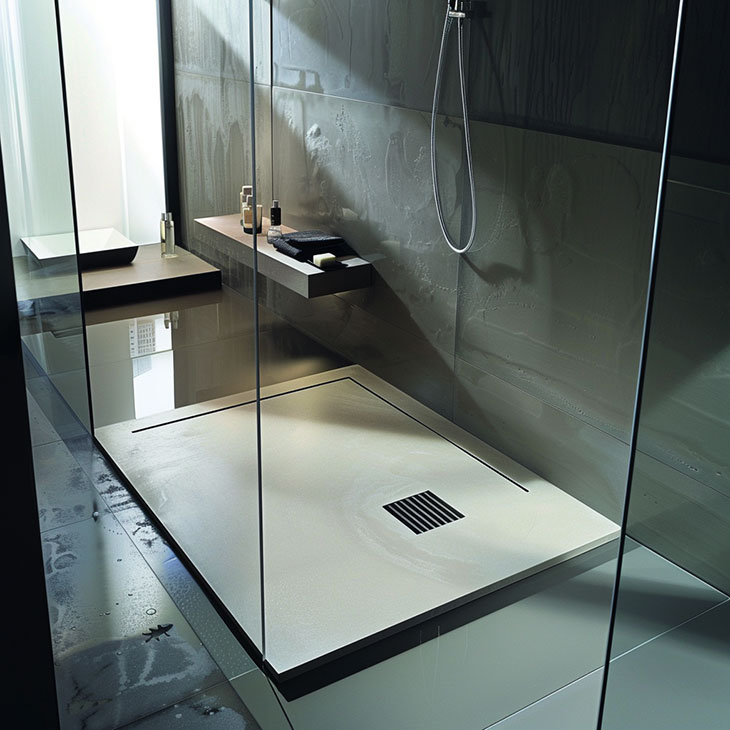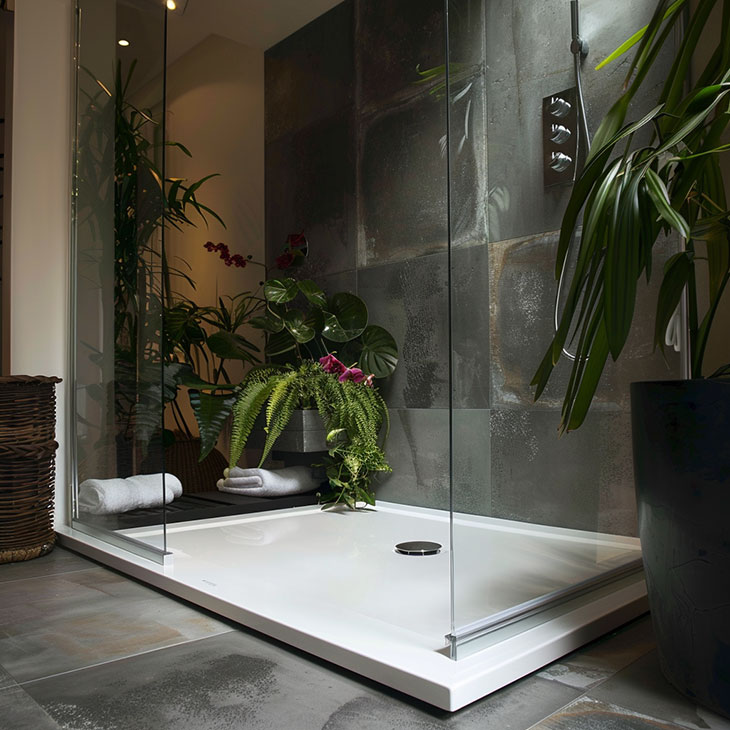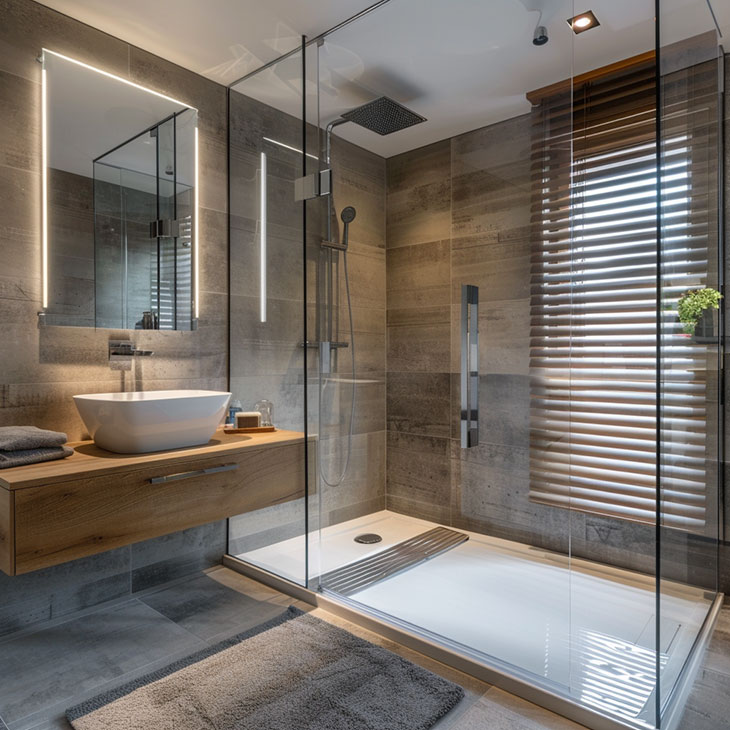
Shower trays, those meticulously designed platforms that underpin the shower area, have revolutionized the design of bathrooms over the years. Their evolution reflects a broader shift in interior design towards functionality blended with minimalist aesthetic appeal, a trend particularly evident in the contemporary bathroom design. ARCHISCENE magazine’s editors explore how shower trays have influenced bathroom design, touching upon their practicality and functionality amidst ongoing debates.
The Evolution of Shower Trays
Historically, bathrooms served purely functional purposes, with design and aesthetics playing a minimal role. However, as lifestyles changed and homeowners began to view their bathrooms as personal retreats, the demand for stylish yet practical elements grew. Shower trays, initially basic and purely functional, have undergone significant transformation. Modern trays are not only about directing water efficiently; they are integral to the bathroom’s overall design and feel.
Together with the dominant need in interior design for simplified lines the shower tray has quickly turned into a primary staple in most of today’s newly built and renovated bathrooms.
Design Integration and Aesthetic Influence
One of the most noticeable impacts of shower trays on bathroom design is their contribution to the understated aesthetic of modern bathrooms. Available in various materials, such as acrylic, ceramic, stone resin, and even luxurious natural stone, shower trays can complement or contrast with the bathroom’s overall design theme while at the same time hardly standing out. They come in an array of shapes and sizes, from rectangular and square to quadrant and pentagonal, allowing interior designer and DIY home enthusiasts to go for customization in bathroom layouts. This versatility makes it possible to create cohesive, visually appealing spaces that reflect personal style and contemporary design trends.
Shower Trays Space Optimization and Accessibility
Shower trays have also revolutionized bathroom design through space optimization and accessibility. Low-profile designs, for example, not only offer a sleek, modern look but also enhance accessibility, making them an ideal choice for multi-generational homes. The inclusion of shower trays in wet room designs, where the tray is seamlessly integrated into the floor, exemplifies how these elements can make bathrooms more accessible while maintaining a high design standard, stores such as Wet Rooms Design Ltd offer today a wide range of well designed quality options.
These features have caused massive changes to the way interior designer shape bathroom in the past decades. The same have gone in demand for new and renovated bathrooms as much as the underfloor heating demand.

Practicality and Functionality Debate
Despite their aesthetic appeal and design versatility, the practicality and functionality of shower trays and their linear drains are subjects of debate. Critics argue that while shower trays enhance the bathroom’s visual appeal, they can present maintenance challenges, such as cleaning difficulties of linear drains in textured or matte finishes and the risk of water leakage if not properly installed. Proponents, however, highlight advancements in materials and design that address these concerns, such as anti-slip surfaces and improved drainage systems that prevent water accumulation and facilitate easier cleaning. Needless to note, the bathroom industry has massively involved when it comes to shower trays. And quality is today often tied in with the price of the same. However, the seamless design of the show trays, often leads the home owners to disregard, and forget the need for the regular maintenance of the same.
Water Efficiency and Sustainability
Another dimension of shower trays’ impact on bathroom design is their role in promoting water efficiency and sustainability. Modern shower tray designs focused on linear drains often incorporate features that minimize water use without compromising performance. This shift towards sustainability reflects a broader trend in bathroom design, where eco-friendly features become increasingly important to homeowners.

Finally, shower trays have undoubtedly changed the landscape of bathroom design, merging functionality with aesthetic appeal. Their evolution from simple, functional elements to integral design pieces highlights the dynamic nature of interior design trends. Despite the debates surrounding their practicality and functionality, it’s clear that shower trays offer unique benefits in terms of design flexibility, space optimization, and sustainability. As bathroom design continues to evolve, shower trays will likely remain a key element, balancing the scales between practicality and style in the contemporary home.



